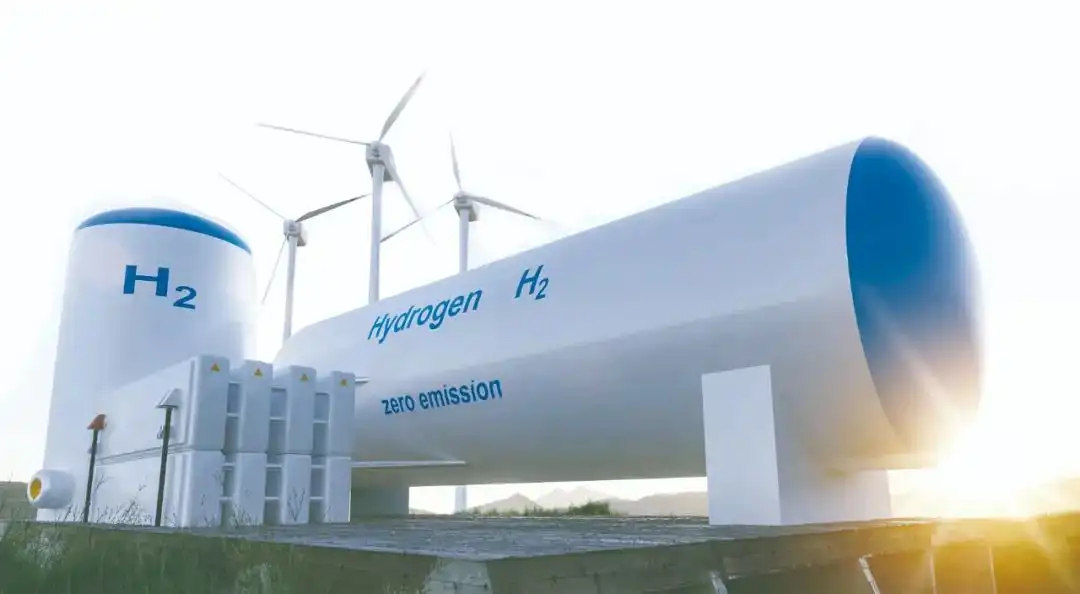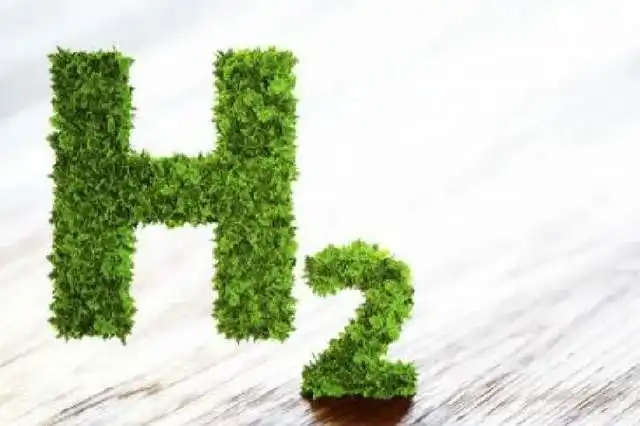Combination of multiple technical routes for hydrogen production and alkaline water electrolysis still dominates
The green hydrogen projects currently under construction and operation are gradually changing from a single route to a combined route, taking into account the economy, reliability and large-scale development needs.

As an important carrier to deal with climate change and promote energy transformation, green hydrogen has huge potential for application and development in the four major fields of chemical industry, steel, transportation, and power generation. At present, there are four main technologies for electrolyzing water to produce green hydrogen:Alkaline water electrolysis (ALK), proton exchange membrane water electrolysis (PEM), anion exchange membrane electrolysis (AEM) and solid oxide water electrolysis (SOEC). The green hydrogen projects currently under construction and operation are gradually changing from a single route to a combined route, taking into account the economy, reliability and large-scale development needs.
Alkaline water electrolysis dominates
According to the "Standards and Evaluation of Low-Carbon Hydrogen, Clean Hydrogen and Renewable Hydrogen" issued by the China Hydrogen Energy Alliance, hydrogen is generally divided into low-carbon hydrogen, clean hydrogen and renewable hydrogen, commonly known as grey hydrogen, blue hydrogen and green hydrogen. Green hydrogen refers to hydrogen produced by electrolysis using renewable energy sources such as wind power and solar energy. The hydrogen production process has no carbon emissions. "Compared with other hydrogen production routes, the biggest advantage of electrolyzing water to produce hydrogen is that it can produce green hydrogen." Shen Jiong, head of the reshaping colorful hydrogen energy project, said in an interview with a reporter from China Energy News.
Due to the long history of development, high technological maturity and low cost, hydrogen production from alkaline electrolysis from water has become the mainstream hydrogen production route by electrolysis of water and occupies a dominant position in the market.。
It is reported that in the early large-scale green hydrogen projects in China, basically only alkaline electrolysis tanks were installed. For example, China's first 10,000-ton photovoltaic green hydrogen demonstration project-Sinopec Xinjiang Kuche Green Hydrogen Demonstration Project-recruited 13 groups of 4 alkaline electrolysis cells each with a hydrogen production of 1000 standard cubic meters per hour, supporting equipment such as gas-liquid separation and hydrogen purification.
"In the next 10 to 20 years, alkaline water electrolysis will dominate." Lu Xunyu, a tenured professor at the University of New South Wales, predicted.
However, some industry sources revealed that although the current supply of alkaline electrolyzers is large, it has not fully achieved the purpose of wind, solar and hydrogen storage. The "surge" of green hydrogen projects has brought excessive "false fire" to the electrolytic cell field. In actual operation, electrolytic cells and core components still need to work hard on reliability and stability. Because the alkaline electrolytic cell cannot adapt to the large fluctuations of wind, solar and power, the start-up and response are very slow. With the increase in alkaline electrolytic cells, how to broaden the fluctuation range of electrolytic cell operating load has gradually emerged a common problem in this industry. In the future, alkaline electrolytic cells will need to continue to be improved according to actual working conditions.
Combination preparation of multiple technical routes
In view of the limitations of hydrogen production by alkaline electrolysis of water, coupled with the unique advantages of the three hydrogen production methods of PEM, AEM, and SOEC, green hydrogen projects are not "either or" when choosing hydrogen production routes. Judging from the large-scale green hydrogen projects that have been approved and are under tender, an "ALK+PEM" hydrogen production method that combines the advantages of alkaline electrolysis cells and PEM hydrogen production has been quietly born in the industry.
In January this year, the national key research and development plan "Hydrogen Energy Technology" 1.1 special project "Key Technologies and Demonstration of Ten-MW Alkaline-PEM Hybrid Hydrogen Production System" led by Guohua Investment (Hydrogen Energy Company) was officially received from the Ministry of Science and Technology. Approval documents entered the implementation stage.
Previously, the 200,000-kilowatt new energy hydrogen production demonstration project in Damao Banner, Baotou City, Inner Mongolia, successfully produced hydrogen and completed filling. This project is one of the first large-scale demonstration projects for green hydrogen production from renewable energy in Inner Mongolia Autonomous Region. The project will produce 7800 tons of green hydrogen every year, electrolyzed water will produce 12000 cubic meters per hour, and achieve 100% clean electricity hydrogen production. Among them, the hydrogen production equipment uses 11 sets of 1000 standard cubic meters per hour alkaline electrolytic cell hydrogen production equipment and 5 sets of 200 standard cubic meters per hour PEM hydrogen production equipment, and the hydrogen purity exceeds 99.999%.

Among the large-scale green hydrogen projects in China that use "ALK+PEM" combined electrolytic cells for hydrogen production, in addition to the 200,000-kilowatt green hydrogen demonstration project in Huadian Damao Banner, Inner Mongolia, there are also SDIC Da 'an wind and solar green hydrogen synthesis ammonia integrated demonstration projects, China Energy Construction Songyuan Hydrogen Energy Industrial Park (green hydrogen, ammonia and alcohol integration) project, and PetroChina Yumen Oilfield Renewable Energy Hydrogen Production Demonstration Project.
It is worth noting that the "PEM+AEM" combination has appeared in the hydrogen production equipment of domestic green hydrogen projects. Shandong Dongyue Research Institute Co., Ltd., a key project of "Hydrogen into Thousands of Thousands"-the Hydrogen Energy Key Technology Integration and Demonstration Park Project, uses a 100-standard cubic meters per hour PEM hydrogen production facility and a 100-standard cubic meters per hour AEM hydrogen production facility. It is reported that the hydrogen production stations of several green hydrogen projects currently being promoted by Yijing Hydrogen will adopt the "ALK+SOEC" design.
Some industry insiders predict that in the future, there will be many green hydrogen projects using a combination of hydrogen production equipment to produce hydrogen.
Focus on new breakthroughs and disruptive technologies
Hydrogen energy is known as the "ultimate energy source of the 21st century" and is a recognized clean energy source. Only by solving the technical problems of hydrogen production can the development of the hydrogen energy industry be promoted. In addition to ALK, which is the most mature, breakthroughs in hydrogen production equipment for PEM, AEM, and SOEC also need to be applied and verified in green hydrogen projects.
On March 20, the domestic 100-kilowatt SOEC electrolyzed water hydrogen production project, a major scientific and technological project of Sinopec's hydrogen energy technology, started. The construction period of the project is expected to be 30 days and the test period is 60 days. With the goal of safe production and efficient production of high-purity hydrogen, it aims at the application of a million-level SOEC electrolytic water hydrogen production system at high temperatures, high humidity, hydrogen-related, oxygen-rich and micro-positive pressure. We will tackle key problems in stable operation, health management and low energy consumption in the environment to improve the operating stability of stacks and materials.
Wannianfang, a senior expert at the Sinopec Academy of Petroleum and Chemical Sciences, said that although electrolyzed water hydrogen production technology has broad application prospects and huge development potential, it still faces some challenges in practical application.:The energy consumption for hydrogen production by electrolysis of water is still high, and how to reduce energy consumption and improve efficiency is an important direction of technological development; the manufacturing and maintenance costs of electrolysis of water hydrogen production equipment are also relatively high, which limits its promotion in large-scale applications; How to effectively utilize the oxygen generated during the process of electrolysis of water to hydrogen production is also an issue that needs to be considered.
此外,Industry participants also call for policy support for disruptive hydrogen production technologies 。北京理工大学博士研究生胡一鸣、中国国际经济交流中心研究员梁云凤在联合撰写的文章中提到,可再生能源电解制氢仍然是两步法,都需要通过电解水制氢,使得设备投入和运营成本大大增高。等离激元光合制氢是利用太阳光能或工业废热,一步将水分解转化为氢气,大大降低了制氢成本。目前,世界科学界对于等离激元技术及其应用已展开相关系列研究,并取得一定创新成果。
